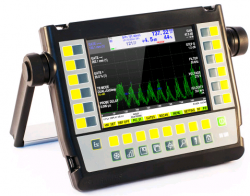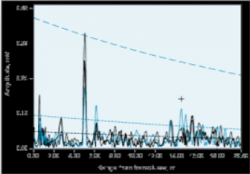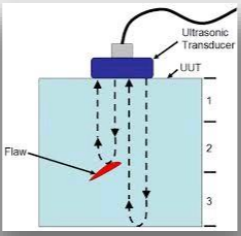Ultrasonic Testing (UT)
Is a non-destructive testing technique based on the propagation of ultrasonic waves in the object or material tested. In most common UT applications, very short ultrasonic pulse-waves with centre frequencies ranging from 0.1-15 MHz are transmitted into materials to detect internal flaws or to characterize materials.
The thickness of an object can be tested, and pipework corrosion can be monitored. Ultrasonic testing is performed on steel and other metals and alloys. It is used in many industries including steel and aluminium construction, metallurgy, manufacturing, aerospace, automotive and transportation sectors.
An ultrasound transducer connected to a diagnostic machine is passed over the object being inspected. There are two methods of receiving the ultrasound waveform:
In reflection (or pulse-echo) mode, the transducer performs sending and receiving of the pulsed waves as the “sound” is reflected in the device.
Reflected ultrasound comes from an interface, such as the back wall of the object or from an imperfection within the object.
The diagnostic machine displays these results in the form of a signal with an amplitude representing the intensity of the reflection and the distance, representing the arrival time of the reflection.
In attenuation (or through- transmission) mode, a transmitter sends ultrasound through one surface, and a separate receiver detects the amount that has reached it on another surface after travelling through the medium.
Imperfections or other conditions in the space between the transmitter and receiver reduce the amount of sound transmitted, thus revealing their presence.



